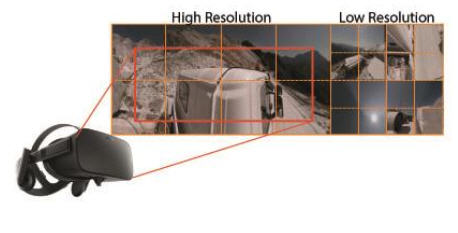Fraunhofer HHI at Mobile World Congress with VR and 5G technologies

You find the following highlights at our booth 7G31:
Tile Based DASH Streaming for Virtual Reality with HEVC – Enabler for high quality 360 degree Video
Only high resolution content can give a sense of immersion in VR video applications, but the large amount of data poses a challenge to common transport systems and decoders.
Tile based DASH streaming with lightweight HEVC Tile Aggregation allows to easily adapt the 360 degree video data stream to the current user viewport.
This technology allows reducing throughput and decoder requirements significantly without complex transcoding.
5G: mobile networks of the next Generation
The fifth-generation mobile network assumes a key position in the communication landscape of the future. Autonomous driving, Industry 4.0, the Internet of Things, and the tactile Internet for wireless object control in real time require a quantum leap in efficiency, the scope of performance and the availability of mobile communication networks.
The new 5G wireless communication technology will be the basis for the digital infrastructure of the future. The industry plans to deploy the first 5G-capable networks starting in 2020. In a consortium with manufacturers, network operators, users and research institutions Fraunhofer HHI will realize prototypes of the communication technology infrastructure for 5G early on, allowing it to be experienced in the 5G testbed of Berlin.
At Mobile World Congress in Barcelona, Fraunhofer HHI presents the following 5G technologies:
– Active antenna arrays for massive MIMO signal processing
– Quadriga: 3D/4D quasi-deterministic channel mode
– Millimeter wave technology
https://www.hhi.fraunhofer.de/en/press-media/press-releases.html
Media Contact
All latest news from the category: Trade Fair News
Newest articles

A universal framework for spatial biology
SpatialData is a freely accessible tool to unify and integrate data from different omics technologies accounting for spatial information, which can provide holistic insights into health and disease. Biological processes…

How complex biological processes arise
A $20 million grant from the U.S. National Science Foundation (NSF) will support the establishment and operation of the National Synthesis Center for Emergence in the Molecular and Cellular Sciences (NCEMS) at…

Airborne single-photon lidar system achieves high-resolution 3D imaging
Compact, low-power system opens doors for photon-efficient drone and satellite-based environmental monitoring and mapping. Researchers have developed a compact and lightweight single-photon airborne lidar system that can acquire high-resolution 3D…





















